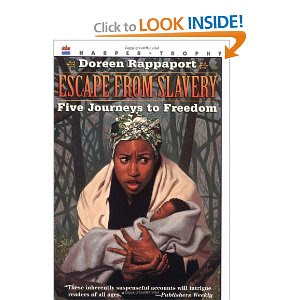Students also viewed images and text from recently published book: "Dave the Potter: Artist, Poet, Slave" by Laban Carrick Hill and Bryan Collier.
After a group discussion about Dave and his life, the students chose one of Dave's poems and held small group discussions on the poem's meaning, continuing to learn about Dave's life as a slave and his desire for freedom, current themes of his poetry. The day finished with the classes creating their own clay plate. Students shaped their slab into a decorative plate shape, trimming edges and some adding decorative borders and various textures. Plates were then left to dry at Highcrest, fired in the kiln and transported to LRMS for their completion.
Session 2: The classes next got together at LRMS. Ms. Avery led a Powerpoint discussion on the celebration of "Juneteenth," a commemoration of African American freedom. Students wrote their own poems on freedom. They used various underglazes to write their poem on their plate and to embellish their plates with the colors, patterns and symbols. Plates were fired in the kiln and proudly displayed. Just like 'Dave the Potter', students were able to connect their art with both the written and visual language.
 |
| PowerPoint on 'Dave the Slave' at Highcrest School |
 |
| Students Read and Discuss Poetry |
 |
| LRMS Student and Highcrest Student Read "I Shall Rise" by Maya Angelou |
 |
| African Inspired Border Designs |
 |
| Students Read & Collaborate on Primary Source Documents |
 |
| Students Write Poems on Freedom! |
 |
| Underglaze Paints on Clay Plates |









































